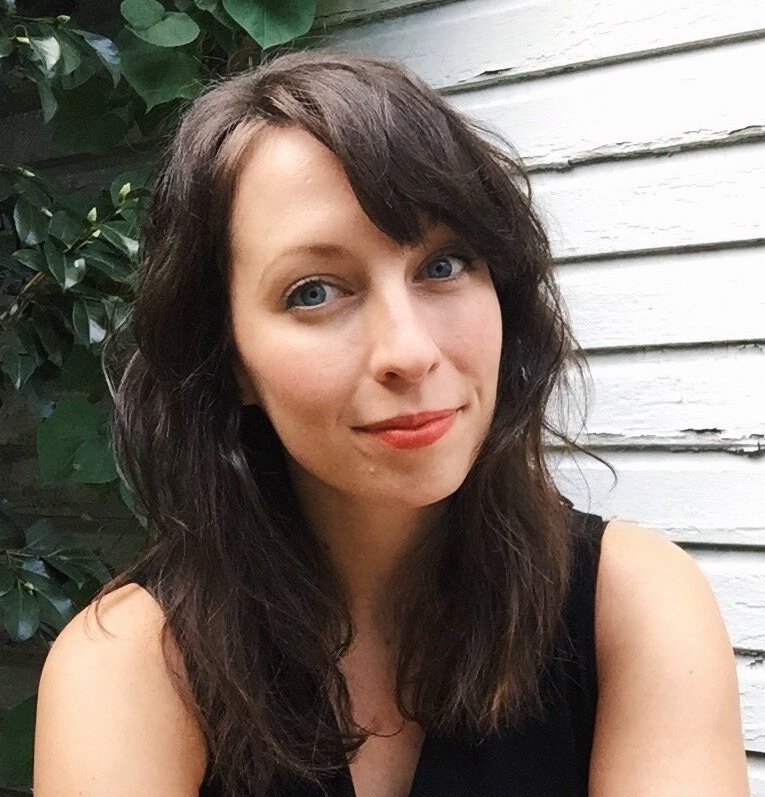
Why Acceptance Doesn’t Mean We Have To Agree
In my twenties, I spent several years in a support group for the friends and family of people living with addiction. We were brought together by our shared experiences of ineffectively exerting energy and personal resources trying to make life better for our loved one: All of us knew what it was like to love someone who was their own worst enemy, who promised to change but seemed unwilling or unable to do it, no matter how many times they’d tried. Everyone had a story of betrayal and rejection, of nights spent worrying and pacing next to our silent phones. Some of us lost jobs, homes, or marriages; all of us had been told that we were fools at some point or another, as though the tiny glimmer of hope that kept us coming back was some sort of personal weakness or character flaw and not unconditional love.
“Have some self-respect,” one woman’s spouse told her after she bailed their son out of jail for the third time. Her husband, who didn’t attend our meetings, accused her of enabling their son every time she helped him, demanding that if she didn’t cut him off, then she was as good as co-signing his addiction. “You have to take a stand,” he’d said to her, “Otherwise you might as well be pouring the booze down his throat yourself.”
“We came together to learn how to love them without trying to control or cure them — without losing ourselves in the process.”
We’d all been told this, at some point or another. Some of us even felt this way ourselves, cutting off ties with the loved one and attending meetings to try to assuage the guilt or to learn if there was some other way, to find an answer to this impossible riddle. But that’s not what our group was about. We weren’t there to “fix” someone’s addiction at all; we came together to learn how to love them without trying to control or cure them — without losing ourselves in the process.
We were learning radical acceptance.
What is radical acceptance?
In the most straightforward terms, radical acceptance is the practice of accepting reality as it is. Which is a lot more complicated than it sounds!
We view our experiences through lenses of reactions. Reality can become muddled with our desires, judgments, and the need to control the outcome. When reality is painful, it is natural to resist it, fight it, try to change it, or do anything we can to relieve the pain.
Radical acceptance proposes that by letting go of our impulse to resist the pain, we can paradoxically find peace. In many cases, we might even be able to reduce or eliminate the pain, anxiety, panic, worry, and stress that we generate while spinning our wheels trying to fight situations and emotions that are simply not in our control.
“Radical acceptance proposes that by letting go of our impulse to resist the pain, we can paradoxically find peace.”
Though radical acceptance can be connected to Buddhism and several branches of psychology, I came to the concept through Dialectical Behavior Therapy. I was trying to figure out how to move forward in a difficult relationship, how to find a healing path that would honor everyone’s needs without harming myself in the process.
As a Type A people pleaser and firstborn daughter Problem Solver, I had already exhausted my own resources to the point of total burnout. Nothing had worked, and I couldn’t continue to drain myself because, well, there was nothing left to drain.
When we have a problem, my therapist told me, we have four options: We can fix the problem, change how we feel about the problem, do nothing and remain miserable, or accept the problem. She drew a quadrant on a sheet of paper, pointing. “In relationships, the only time you can choose the first option is if you are the problem,” she told me. “And sometimes not even then; you can’t ‘fix’ people.” I knew this. I’d learned this in my support group, and again as a manager in various jobs, where the maxim “You can’t manage people, only processes” had been my guiding star. Had it stopped me from trying? Of course not. And it landed me right where it always had: the problem was still there and I was exhausted.
“We can fix the problem, change how we feel about the problem, do nothing and remain miserable, or accept the problem.”
“Changing how you feel about the problem is going to be tricky,” she said, “Because it sounds like a lot of your battle is fighting with yourself on how you actually feel.” I took a minute to sit with that, then asked her to explain. “So much of what you tell me about this relationship is framed with a lot of unspoken expectations,” she clarified. “You feel as though you ‘should’ be feeling or doing or being differently than you are. There’s a lot of judgment in there.”
Well, that was not a surprise (see: Type A; People Pleaser; Firstborn Daughter). Self-criticism is how I motivate myself! Since doing nothing was not a choice (I was in therapy about this, so I was already Doing Something), I looked at where she’d written “radical acceptance” with wariness. “Okay,” I said with all the enthusiasm of a toddler facing a plate of cooked spinach. “What’s this one mean?”
“‘What if you let yourself sit with how you feel instead?’ she asked me. ‘What do you think you might see if you looked at your feelings objectively?'”
“What if you let yourself sit with how you feel instead?” she asked me. “What do you think you might see if you looked at your feelings objectively?”
This was a little harder than I expected. Sneaky shoulda coulda wouldas kept finding their way into my framing, obscuring the heart of my emotions with a slew of criticism and self-doubt. “Okay,” my therapist said. “Let’s try it now in the third person, as if you weren’t talking about your own feelings but a friend’s.” It took a little while, but eventually I was able to find words that were more objective, and from there, we worked on the next step: compassion.
Accepting the problem, she said, is about this: Freeing yourself from the suffering that comes from resisting something you cannot change.
Elena Brower, a yoga teacher I turn to whenever I find myself in the depths of an emotional tailspin with no way out, talks about holding our own feelings with compassion by using the phrase, “Oh, how human of me.” When we are confronted with a reality that causes us pain, our instinct is to make the pain go away, by any means necessary. It is a deeply human response! But sometimes, our attempts to make the pain go away can only cause us more pain.
“Sometimes, our attempts to make the pain go away can only cause us more pain.”
Marsha Linehan frames radical acceptance in her DBT practice as this: (1) Accepting the reality is what it is; (2) accepting that the event or situation causing pain has a cause; and (3) accepting life can be worth living even with painful events.
When I think about all the time and energy I’ve spent lying awake and agonizing about something that is completely out of my control, my instinct is to either criticize myself for feeling and thinking that way, or to double down on my efforts to gain control of the impossible. (Often, I do both!) And time and time again, I’ve learned that whatever pain I experienced from the original situation is only compounded.
What radical acceptance isn’t
If you’re anything like me, you might be experiencing resistance to a concept that seems a lot like complacency. “How is this different than doing nothing?” I asked my therapist. “How isn’t this just giving up?”
This is a very common misconception about radical acceptance. Acceptance, as a verb, has some overlap in our language with consent, approval, and permission: We accept proposals of marriage; accept gifts and favors; get accepted into programs and institutions. Radical acceptance is about the truth of what is: acceptance is simply being willing to regard a person, a situation, or a feeling with an honest, non-judgmental gaze.
“The objective of radical acceptance isn’t to fix problems, but to minimize the suffering we experience when we resist reality.”
The radical part comes in when what you’re asked to accept sucks. So that impulse to immediately act in order to make the thing not suck anymore? Instead of that, you have to acknowledge all your feelings about the situation without judgment or agenda. “Oh,” you can say as you notice a particularly tough feeling emerge. “How human of me!”
It’s important to be clear on the goal of this practice: The objective of radical acceptance isn’t to fix problems but to minimize the suffering we experience when we resist reality. We will all experience hardships, inequities, adversity, and grief; radical acceptance asks us to allow our feelings responding to these things to exist, rather than prolonging and compounding our suffering by avoiding, resisting, or ignoring them.
“The curious paradox is that when I accept myself just as I am, then I can change.”
― Carl R. Rogers, “On Becoming a Person: A Therapist’s View of Psychotherapy”
We are all familiar with the results of prolonged stress on our bodies, and practicing radical acceptance can have a positive impact on our physical health. There have been studies to indicate that this practice expedites personal healing. A 2019 meta-analysis of cancer patients practicing acceptance-based behavior showed a significant reduction of distress living with their condition. Some psychologists also suggest that the very changes we seek out while resisting our situation only become possible after we stop fighting it. Founder of the humanistic or client-centered approach to psychology Carl R. Rogers wrote, “The curious paradox is that when I accept myself just as I am, then I can change.” Maybe we can only see our situations clearly once we’ve stopped fighting them; only after that can true change even be possible.
How this works politically
When I pitched this article I’d planned on writing about what I’ve learned about navigating challenging relationships, or learning to live through seasons of upheaval and uncomfortable change. I had planned on writing about my experience loving someone with addiction, about losing my job after becoming a mother, and other times I’d learned the hard way that my attempts to resist the pain from these realities only prolonged my suffering.
After the election, I couldn’t work on this piece without running into the question of how to apply the idea of radical acceptance to our political landscape.
All I have to do is refresh my Instagram to see a new smart think piece positing how morally impossible it is to maintain relationships with those who voted differently from you. It’s a passionate and compelling argument when the stakes are higher than ever, with real lives on the line. People are preparing to fight for their basic human rights, and there’s a call-to-arms sweeping across my feed. How do we practice radical acceptance here?
“Radically accepting dangerous and unacceptable leadership or conditions that cause us harm is not the same as submitting to them.”
Spoiler: I don’t have a silver bullet. But I feel compelled to outline very clearly what I am not saying here: Radically accepting dangerous and unacceptable leadership or conditions that cause us harm is not the same as submitting to them. Radical acceptance simply means naming them for what they are, and allowing ourselves to feel whatever we feel without judgment.
As someone who grew up thinking that one political party was literally a dirty word because of the way my family used it, I’ve struggled deeply over the course of my adult life with how to have a relationship with the family members whose beliefs are so completely at odds with my own. This is what I’ve learned: When I am able to accept that they are who they are, and I approach all of our interactions with that clarity of perspective, our relationship improves. I don’t go in to our conversations expecting anything other than the person I know them to be, in other words.
How is this helpful? It removes the anticipatory dread and stress over something I ultimately don’t have control over: another person’s thoughts and feelings. I’m not surprised when they express their beliefs, because I already know how they feel. And not only has this brought me some degree of peace in letting go of my reactions of outrage and surprise, it has also made it possible for us to have more open, curious, and compassionate conversations without conflict. And that’s something.
“It removes the anticipatory dread and stress over something I ultimately don’t have control over: another person’s thoughts and feelings.”
What happens after this process? We can’t know until we go through it. At the very least, hopefully there’s some sense of peace where the anxiety and the suffering used to be. And then? The real work can begin.
Finding freedom in acceptance
How do you accept a situation that you find unacceptable? How do you reconcile your powerlessness with the caring impulse to keep trying to find a solution? At what point is preserving your peace selfish, and at what point is it necessary for your survival?
“At what point is preserving your peace selfish, and at what point is it necessary to your survival?”
When I was attending meetings for loved ones affected by addiction, we grappled with these questions. We had all come from some sort of belief system that taught “unconditional love,” and we were trying to learn what that actually looked like when conditions were very, very bad. We’d tried everything so far, done every single thing we could think of to make the situation better, and nothing worked. We didn’t agree with our loved one’s choices but we couldn’t abandon them either. We cared about them too much, and we felt bound to demonstrate this care by continuing to try.
But trying to fix something we don’t have the power to fix not only doesn’t work, but it can also actively harm our own wellbeing in the process.
“Trying to fix something we don’t have the power to fix not only doesn’t work, but it can also actively harm our own wellbeing in the process.”
Many things can be true at once, like being able to say “I love my dad,” and also “My dad’s vote against my healthcare rights feels like a personal betrayal.” Being able to let both feelings exist without judgment (i.e. “Feeling betrayed makes me a bad daughter” or “Keeping a relationship with my dad is a betrayal of my beliefs”) is what radical acceptance is all about.
Where this practice will lead you is different for everyone. Radical acceptance sometimes makes room for exquisite listening, for universal compassion, for curiosity that opens doors to those we’ve learned to think of as “the enemy.” But sometimes the practice reveals where your limits truly are. Sometimes, accepting that a situation isn’t going to change, and recognizing that it is causing you harm, means you will have to leave the situation behind.
“Only through the process of radically accepting what is can you begin the process of releasing the pain that a difficult situation presents.”
Care and control are not the same thing; accepting the reality of what’s outside of our control (like someone else’s choices) is not an act of complicity, nor is it complacency. And having to enact personal boundaries to preserve your own peace isn’t uncaring, either — especially if the practice of radical acceptance is what ultimately leads you to do so.
Only through the practice of radically accepting what is can you begin the process of releasing the pain that a difficult situation presents. After that, we are free to accept whatever comes next — maybe even the healing, compassion, and change we’ve been looking for all along.
Stephanie H. Fallon is a Contributing Editor at The Good Trade. She is a writer originally from Houston, Texas and holds an MFA from the Jackson Center of Creative Writing at Hollins University. She lives with her family in the Blue Ridge Mountains of Virginia, where she writes about motherhood, artmaking, and work culture. Since 2022, she has been reviewing sustainable home and lifestyle brands, fact-checking sustainability claims, and bringing her sharp editorial skills to every product review. Say hi on Instagram or on her website.




